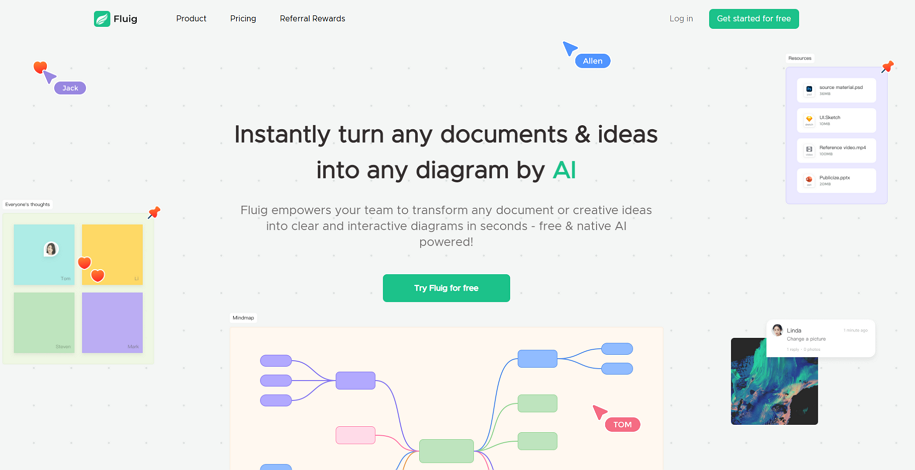
The human brain processes visuals far faster than words—that’s why diagrams like mind maps, flowcharts, and timelines have become essential tools for planning, brainstorming, and communication. They help simplify complex ideas, minimize back-and-forth, and improve collaboration across teams.
But creating these diagrams manually is often a repetitive and time-consuming task—especially when projects evolve and updates are needed on the fly.
So we asked ourselves: in the age of AI, why can’t we just integrate AI or generate an AI tool to create such visuals and diagrams with just natural AI chats?
That question sparked the beginning of Fluig.
With that vision in our mind, we finally built Fluig, a free AI diagram generator that transforms your ideas, documents, or even code into clean, professional visuals—mind maps, flowcharts, fishbone diagrams, timelines, tables, Kanban boards, cards, and more. And it does all that in seconds, through simple, natural chat.
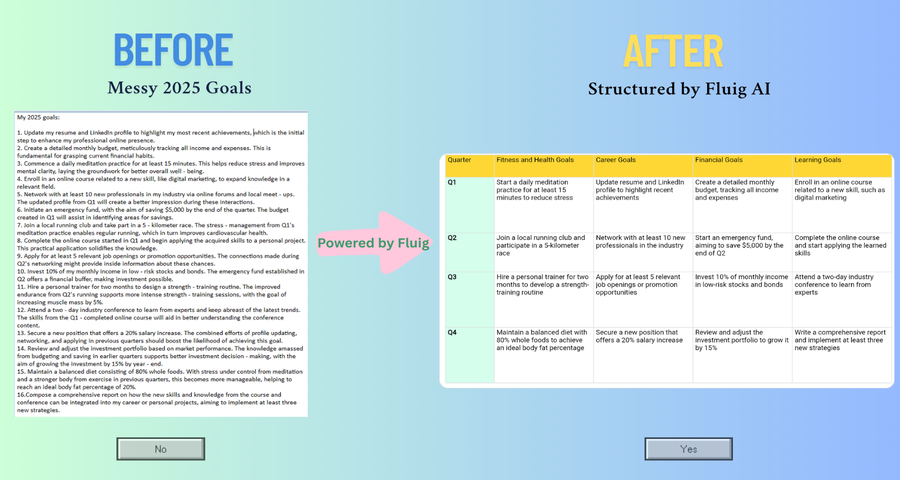
The Goal: Make Everyone Work Like a Genius
When we started building Fluig, our goal was simple: make everyone work like a genius.
AI indicates efficiency
Since the release of ChatGPT, AI has become the ultimate symbol of efficiency. It’s saving people hours of time and unlocking new levels of creativity and productivity. In today’s fast-paced world, using AI to work better and faster isn’t just a bonus—it’s how you stay ahead.
Fluig Supercharges Your Workflow with AI
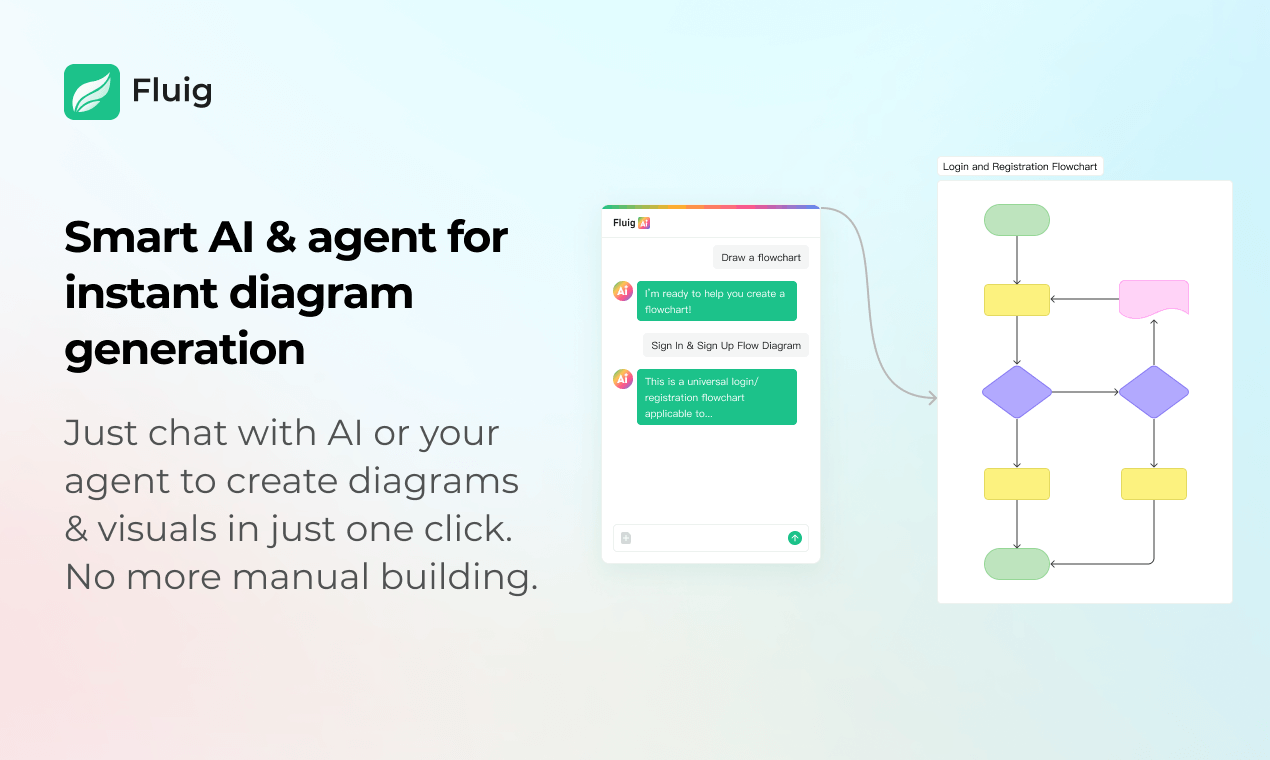
We designed Fluig with one goal in mind: to remove the tedious parts of work and help you focus on what really matters—thinking, creating, and making progress.
Fluig automates the process of creating diagrams. Whether you’re working with a document, PDF, or just a rough idea, it instantly turns your input into professional-quality mind maps, flowcharts, tables, timelines, Kanban boards, or even code.
No more dragging shapes around. No more rebuilding diagrams from scratch every time a change comes in. With Fluig, last-minute updates are no longer a headache—they’re handled in seconds.
For example, just upload a customer requirements doc or type in a concept, and Fluig will generate a detailed, structured diagram you can act on immediately. From brainstorming and planning to decision-making, it’s never been this effortless to turn ideas into impact.
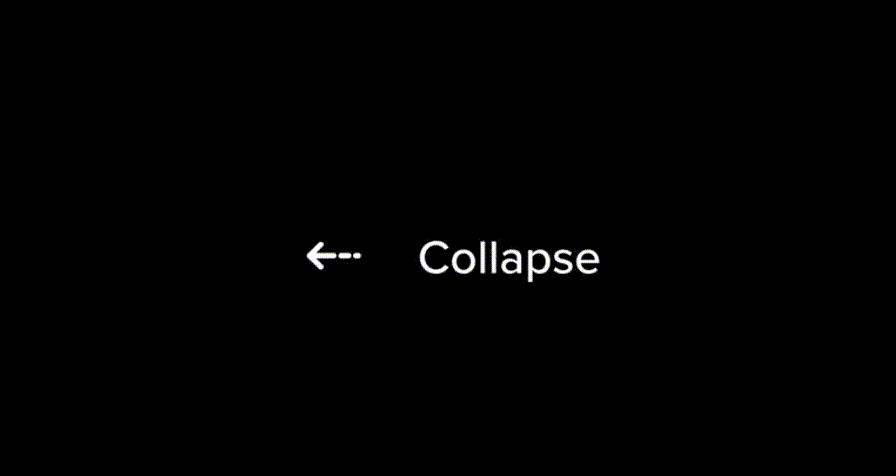
Flexibility: It’s More Than Just Diagrams
Fluig isn’t just a diagramming tool—it’s a flexible AI assistant that adapts to the way you work. Whether you're organizing ideas, planning projects, or communicating with your team, Fluig helps you generate a wide variety of content formats, including:
Commonly-used diagrams
Flowcharts, mind maps, timelines, fishbone diagrams, tables, Kanban boards, class diagrams, and more. Just describe what you need in a chat, and Fluig instantly builds professional diagrams—no manual setup required.
Text-based content, like blog posts
Except diagrams, you can use Fluig AI to generate ready-to-use text contents, like blog posts and articles.
And so much more...
Powered by native AI, Fluig opens the door to even more creative possibilities. Our team is constantly expanding its capabilities—adding new visual formats, smarter outputs, and faster ways to bring your ideas to life.
Also easy to convert between these formats
One of Fluig’s most powerful features is format conversion. You can effortlessly turn a mind map into an execution-ready flowchart, or reshape a form into a brainstorm-friendly diagram. Just a few clicks—and you’re good to go. Easy, right?
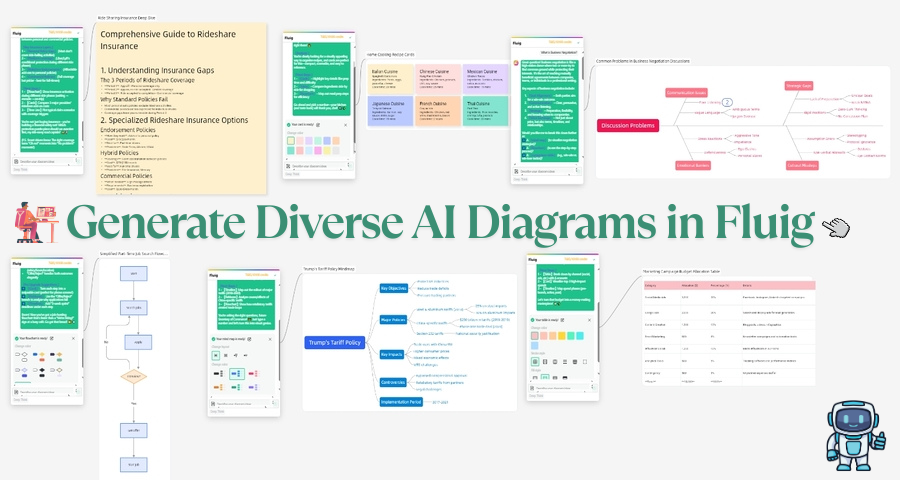
Full of Challenges and Breakthroughs
Building Fluig wasn’t easy. It was a long and demanding journey filled with trial, error—and plenty of breakthroughs. Along the way, we encountered some major technical challenges that helped shape what Fluig is today.
Challenge 1: Teaching AI to truly understand user intentions
To generate diagrams that truly meet users’ needs, the first challenge was helping AI understand what users actually want—beyond just keywords.
Natural language is rich with nuance. Users describe their needs using all kinds of verbs, adjectives, and phrases. Teaching AI to interpret those variations accurately—whether someone says “show the structure,” “map out the process,” or “illustrate relationships”—was one of the most complex problems we had to solve. It took deep modeling and a lot of iteration, but we cracked it.
Challenge 2: How to make AI better understand natural language
Our users come from all over the world, with different languages, dialects, and phrasing habits. Fluig needed to understand all of them.
Getting the AI to handle these differences while still producing precise, relevant diagrams was another major hurdle. After weeks of training and refinement, we reached a breakthrough: Fluig can now understand your input in natural language—whether it's English, Chinglish, or something in between—and turn it into meaningful, organized visuals. It doesn’t just create good-looking diagrams—it captures your intent and structures your thoughts logically.
Challenge 3: Ensuring consistency across the AI’s responses
Many AI tools struggle with consistency—especially during long conversations or when context shifts. For Fluig, that kind of inconsistency would be a dealbreaker. Diagrams need to build on each other logically, not feel like disconnected outputs.
So, we focused on designing an AI that maintains context and coherence. For instance, if you input a single knowledge point, Fluig doesn't just respond with a flat result—it expands it into a full knowledge system. If you follow up with related queries, Fluig generates diagrams that reflect previous context, preserving the logical flow and depth. This means smoother brainstorming, clearer communication, and no repeated backtracking to "re-teach" the AI.
Getting this level of consistency was hard—but absolutely necessary to make Fluig genuinely reliable in real workflows.
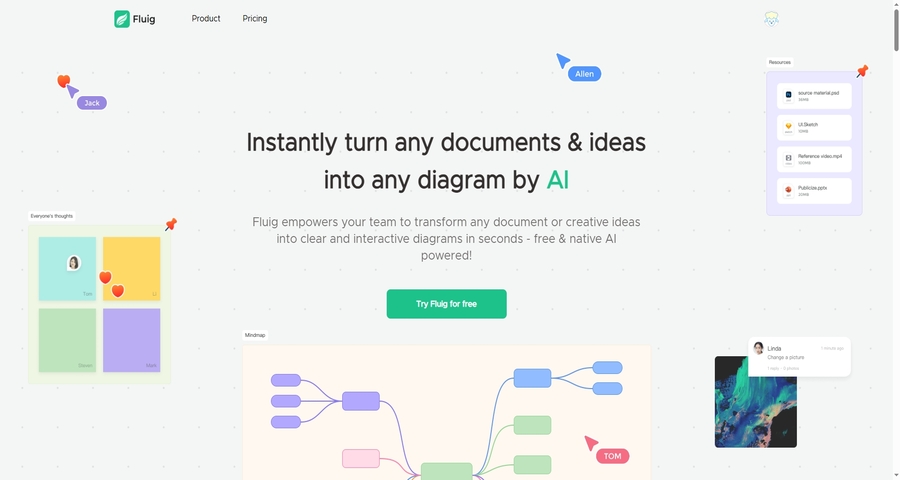
Of course, we’re still facing new challenges every day. But that’s the beauty of building something innovative—the journey is just as exciting as the destination.
So, Can Fluig Really Revolutionize Your Workflow?
As we built Fluig, one question kept coming up:
Can AI truly revolutionize the way we work?
Not just speed things up—but help us automate tasks, uncover connections, and make our workflows smarter and more intuitive?
AI is already reshaping how teams operate across industries. But the real test is whether it can transform how we brainstorm, plan, and collaborate—turning scattered thoughts into structured outputs with just a few prompts.
We believe Fluig is a big step in that direction.
But whether it truly transforms your workflow—that’s up to you.
We’d love to hear what you think. Try it out, explore what it can do, and let us know how Fluig fits into the way you work.



